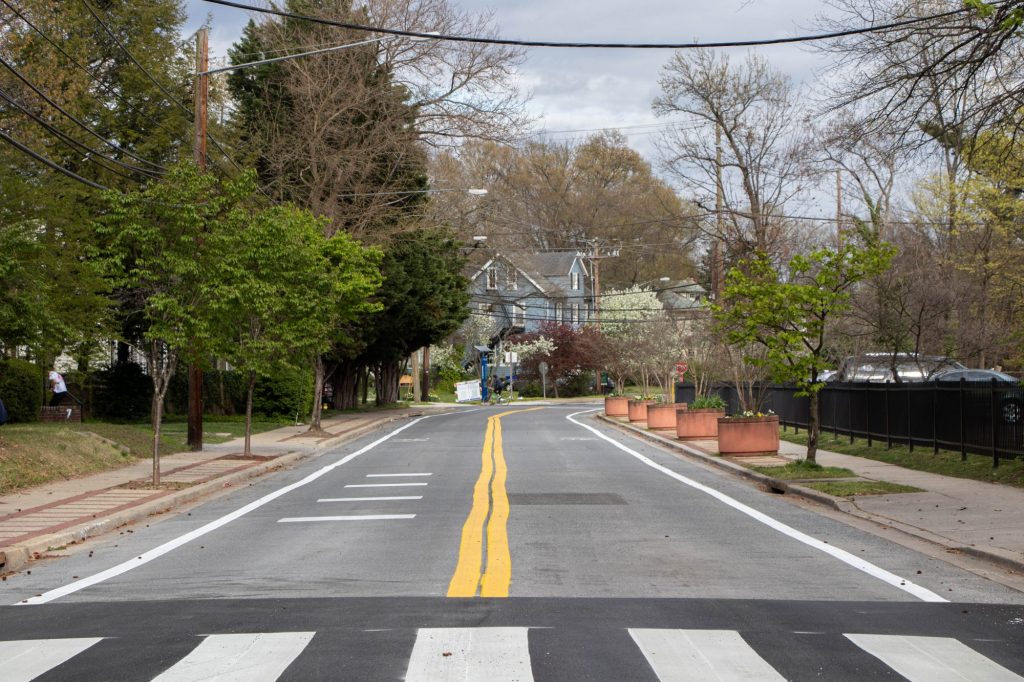Views expressed in opinion columns are the author’s own.
The Mount Pleasant neighborhood in northwest Washington, D.C., has become a beacon of hope and resilience for neighborhoods, towns and cities fighting gentrification. It has managed to remain a “haven for immigrants, activists, punk rockers, entrepreneurs, revolutionaries and returning Peace Corps volunteers” since the 1970s.
Mount Pleasant has a similar demographic composition to College Park. Twenty-seven percent of its total 12,644 residents identify as Latino, and a quarter are foreign-born. Meanwhile, 15.5 percent of College Park’s 32,163 residents identify as Hispanic or Latino, and 22.1 percent are foreign-born.
Despite these similarities in demographics, Mount Pleasant and College Park could not be more different in how they combat gentrification.
First, their histories diverge: Mount Pleasant has a history of fighting for and successfully maintaining its affordable housing. In 1980, a former chairman of the D.C. Council, who was also a resident of Mount Pleasant, co-sponsored the Rental Housing Conversion and Sale Act. That became the legal basis for the Tenant Opportunity to Purchase Act — one of the most progressive affordable housing measures across the country that gives D.C. residents the right to buy their apartment if it goes on the market. TOPA apartments protected working-class individuals in Mount Pleasant and bolstered the neighborhood’s charm and soul.
On the other hand, in the 1970s, College Park enacted the Lakeland Urban Renewal Plan. Intended to stop the historically Black neighborhood’s flooding, the plan ended up displacing over 100 families and destroying two-thirds of the original community. The city is currently going through its own reckoning with its “past history of oppression,” but the effects of that plan still reverberate in College Park.
The two area’s more recent approaches to protecting local businesses differ dramatically as well. In 2018, Mount Pleasant neighborhood activists successfully protected the local Mt. Pleasant Care Pharmacy by creating a petition to block CVS from coming into the neighborhood. One of the reasons activists succeeded was that the neighborhood partnered with local nonprofit District Bridges, which works to support local businesses across the District.
Amid the pandemic, Mount Pleasant’s Marx Cafe — normally the host of nightly live music and Latin DJs — has shifted to become a primarily takeout-only cafe. The Raven Grill, another neighborhood institution, has been doing poorly since the pandemic began, but its owner Merid Admassu feels confident that the Raven will stick around. Though Mount Pleasant is afflicted by the detrimental effects of the pandemic, its residents and local businesses manage to maintain a sense of hope that speaks to the resilience of the neighborhood.
In contrast, many beloved College Park institutions such as Bagel Place are barely staying afloat, while others, such as Krazi Kebob, have already closed their doors to make way for a brand-new residential complex.
In fact, although it’s in the best interest of students and residents alike to stop large developers from coming into the city and jacking up housing prices, College Park is seeing student apartment complex after student apartment complex displace local businesses. According to the Census, 26.7 percent of College Park residents live in poverty. Add that on to the median gross rent of $1,528, and it is not hard to see just how unlivable College Park is becoming.
College Park is in desperate need of a combined effort made up of students, local activists, residents, immigrants, artists and nonprofits to fight developers and slow the tides of gentrification. If College Park is truly committed to learning from its mistakes –– such as the displacement of Lakeland residents –– then it must actively fight large developers and chains from entering the city and protect local businesses and residents.
College Park could first partner with District Bridges to protect local businesses along Route 1. District Bridges could provide neighborhood grants to keep local College Park businesses afloat past the pandemic and provide technical assistance to small businesses to help them thrive.
Additionally, increasing public funds for affordable housing construction would decrease the incentives for the city to turn to large developers and stop the displacement of residents who have lived in the city for decades. The College Park City Council must make an active effort at implementing affordable housing, providing grants and loans to small businesses in danger of being bought out, and empower residents to fight for their city, along with partnering with local activists who want to stop gentrification in and around the city.
Mount Pleasant is a testament to the power of a collective neighborhood activism that fights with everything in its power to hold on to its charm and protect its inhabitants. The D.C. neighborhood’s resilience is a symbol of hope for College Park. It is time that the city council and its residents join collective forces to fight gentrification and preserve the body and soul of College Park.
Laura Phillips-Alvarez is a junior anthropology and government and politics major. She can be reached at lauraphillipsalvarez@gmail.com.



